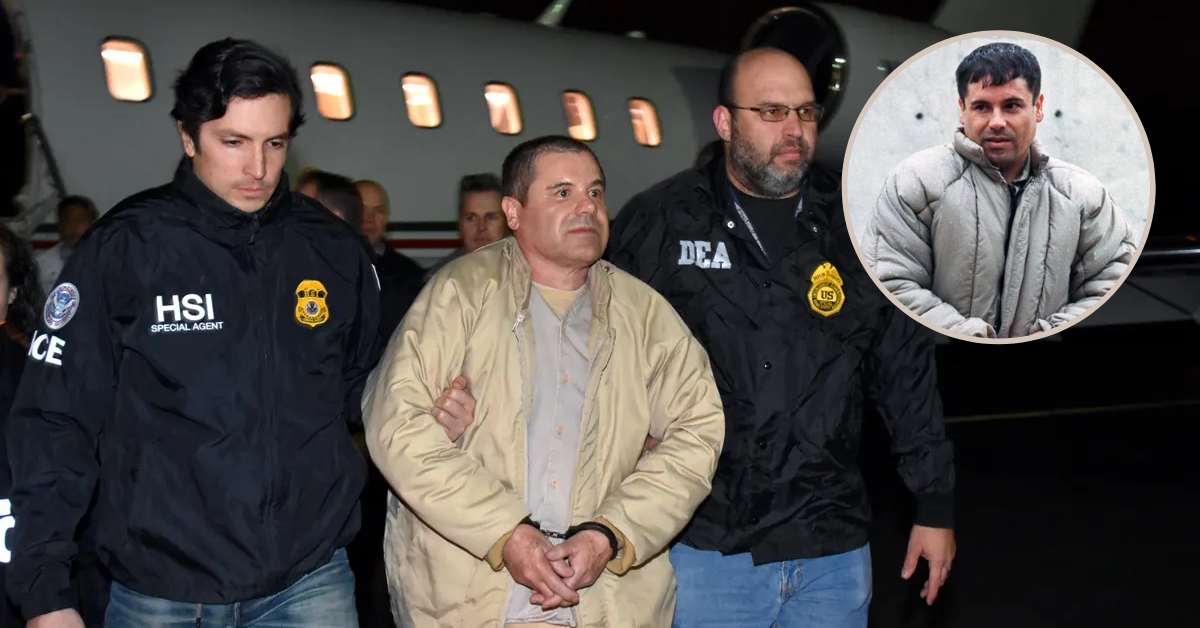The notorious Mexican drug lord Joaquin “El Chapo” Guzmán has long been a representation of the notoriety and power of organized crime. His narrative has enthralled the globe with a life marked by violent cartel leadership and numerous daring prison breaks. Along with his illegal operations, there has been speculation about El Chapo’s wealth.
It is widely believed that Guzmán accumulated incredible wealth during his criminal career. He is known for his massive drug trafficking empire. Insight into the shadowy economy that supported him and the legendary stature he attained as one of the most notorious drug lords in history can be gained by unraveling the complexity of his wealth.
El Chapo Net Worth
As of 2023, El Chapo’s current net worth is anticipated to reach $1 billion. El Chapo had enough wealth during his 30-year tenure as one of the most powerful drug lords to purchase two boats, a fleet of jets, and a private zoo with tigers, crocodiles, and panthers. From 2009 through 2012, he appeared four times on Forbes magazine’s annual list of billionaires. Here you can also check El Chapo’s wife net worth.
Income From Drug Trafficking
In a court document from 2019, the federal prosecutors who successfully prosecuted El Chapo claimed to have valued his revenues down to the last dollar. They disclosed that throughout the course of 25 years, El Chapo’s cartel handled up to 600,000 kilograms of cocaine valued at over $11 billion, 200 kilograms of heroin valued at over $11 million, and at least 420,000 kilograms of marijuana valued at close to $846 million.
Despite the staggering numbers, the prosecution pointed out that they were simply a “conservative” estimate of the still-unknown amount of drugs and cash that Guzmán may have transported over his career.
Here you can also check our recent articles:
- Too Turnt Tony Net Worth: From TikTok Stardom to Comedy Success!
- Stockton Rush Net Worth: Uncovering the Depths of Exploration and Wealth!
- Shawty Bae Net Worth: Why She is One of TikTok Most Beloved Creators?
El Chapo’s Early Career
The Guadalajara Cartel, which was led by Miguel ngel Félix Gallardo (also known as “El Padrino” or “The Godfather”), Rafael Caro Quintero, Ernesto Fonseca Carrillo (also known as “Don Neto”), Juan José Esparragoza Moreno (also known as El Azul, “The Blue One”), and others, was the largest organized crime group in Mexico during the 1980s.
Guzmán started off by flying cocaine from the Sierra Madre region to cities close to the U.S.-Mexico border in the 1970s while working for the drug lord Héctor “El Güero” Palma. Guzmán was ambitious from the start of his career in organized crime and frequently pressured his bosses to allow him to raise the proportion of drugs that were carried across the border.
When conducting business, he also likes to be harsh and serious; if any of his drug shipments were late, Guzmán would just shoot the smuggler in the head himself. Those close to him discovered that it was unwise to take his money or side with rivals, even if they had lower prices.

Because of their admiration for Guzmán’s economic savvy, the Guadalajara Cartel leaders introduced him to Félix Gallardo, one of the most powerful drug lords in Mexico at the time, in the early 1980s.
Prior to being given control of logistics, Guzmán worked as Félix Gallardo’s chauffeur, coordinating cocaine shipments from Colombia to Mexico through land, air, and sea. Palma made sure the shipments made it to the US. Guzman gained enough respect to start working directly for Félix Gallardo.
The majority of the late 1970s and the beginning of the 1980s saw Mexican drug gangs acting as intermediaries for Colombian trafficking organizations to move cocaine across the U.S.-Mexico border.
However, considering that the majority of the drugs trafficked by their cartels were carried through the Caribbean and the Florida corridor, Mexico remained a secondary route for the Colombians. Although Félix Gallardo was a close friend of Juan Ramón Matta-Ballesteros and the top drug lord in Mexico, his operations were nevertheless constrained by rivals in South America.
But in the middle of the 1980s, the U.S. government significantly scaled back drug trafficking operations in the Caribbean corridor, which intensified law enforcement surveillance and placed pressure on the Medellin and Cali gangs.
The Colombian cartels granted Félix Gallardo more control over their drug shipments after realizing it would be more profitable to delegate the operations to their Mexican rivals.
This change in power gave the organized criminal organizations in Mexico more sway over their counterparts in Central and South America. However, the Drug Enforcement Administration (DEA) was working secretly in Mexico during the 1980s, using a number of its operatives as informants.
El Chapo’s Real Estate Assets
El Chapo’s overall assets are unknown, however, the Mexican government seized six mansions after his capture, and three of them were eventually sold at auction in 2019. Each home was anticipated to sell for at least $1 million, but instead, they each ended up selling for $107,530, $64,589, and $55,725 accordingly.
In addition, a witness testified that El Chapo is the owner of numerous beach homes, including a $10 million residence in Acapulco. The “Institute to Return Stolen Goods to the People” (INDEP), a government agency in Mexico, recently tried to sell one of Chapo’s homes at auction with bids starting at about $130,000, but no buyers showed up.